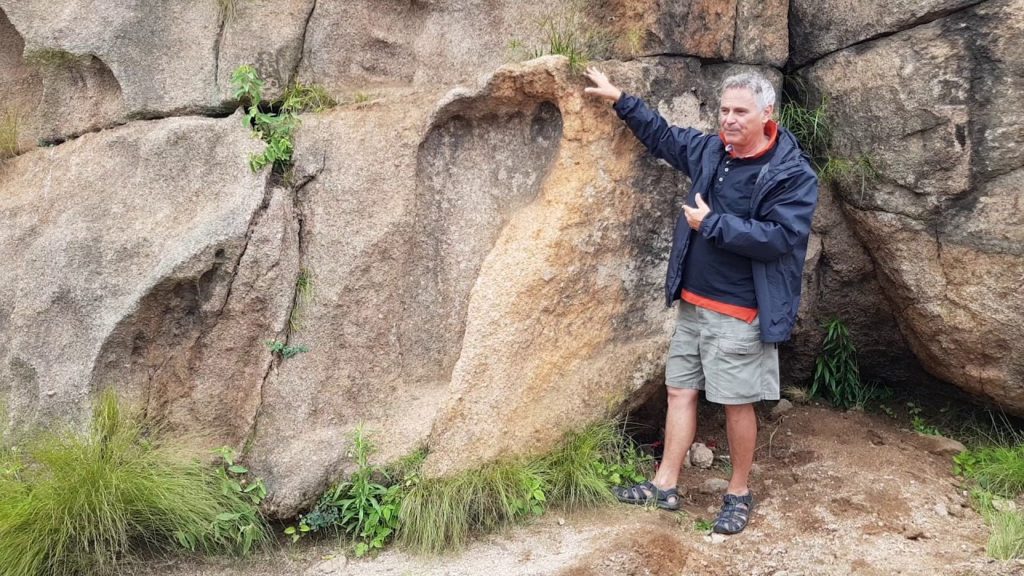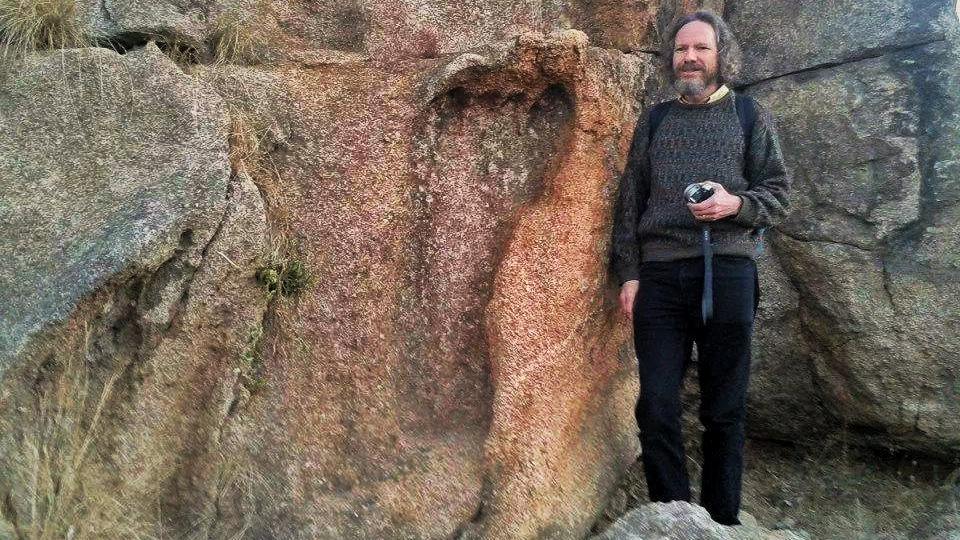A 200-Million-Year-Old ‘Giant’ Footprint Discovered In South Africa Is Known As The Mpuluzi Batholith
Did a massive extraterrestrial species descend hundreds of millions of years ago to reside on Earth? Yes, giants did exist, according to evidence found throughout the world. This footprint is roughly a meter and a half in length. Many believe it is not a human but instead an alien creature.

Michael Tellinger (nicknamed “The South African Indiana Jones”), a South African author, scientist, researcher, and adventurer, exhibits what may be one of the most persuasive bits of evidence that giants once walked the Earth.
This huge 4-foot-long footprint in rough granite has astounded geologists. Some suggest that it is a natural erosion feature. However, for the time being, it is impossible to say.
“There is a greater likelihood of tiny green guys coming from space and sucking it out with their tongues than it being formed by natural erosion,” says Prof. Pieter Wagener of the Nelson Mandela Metropolitan University in Port Elizabeth, South Africa, who holds a Ph.D. in applied mathematics. It is located in Mpaluzi, South Africa, near the Swaziland border.
Granite is thought to be between 200 million to 3 billion years old, based on our current understanding of granite formation throughout Earth’s history. This dating immediately creates intense debate, so we should have an open mind and concentrate on the facts.
In 1912, a hunter called Stoffel Coetzee spotted this remarkable granite footprint while hunting in a remote region. This was a barren region of South Africa known as the Eastern Transvaal, which was teeming with antelope and lions at the time.

It is still in the same condition as when it was discovered, and given its remote location, the chances of it being a terrible fake are pretty remote. Even now, it isn’t easy to find.
The ultimate mystery is how this incredible phenomenon occurred. We don’t know how it happened, but it happened, and we can’t wish it away. Yes, it’s granite; it’s a well-known geological feature of South Africa that’s displayed on all geological maps, which explains why the imprint is so mysterious.
It’s either a “phenocrystic” granite or a coarse porphyritic granite that has undergone many cooling processes. The ultimate result is a fascinating mix of huge and tiny grains. This is why granite merchants prefer to mine in this area since the granite will polish up to be quite “beautiful.”
In South African geology, this outcrop is known as Mpuluzi Batholith (Granite), and formal dating of this rock yielded ages of about 3.1 billion years. This is a real problem that requires thorough scientific inquiry.



